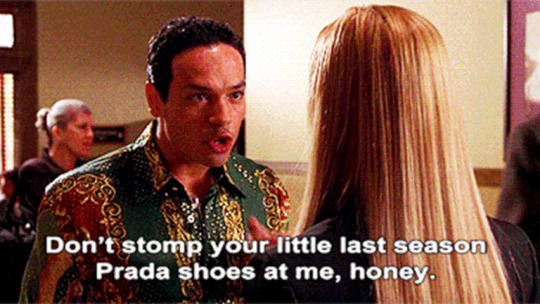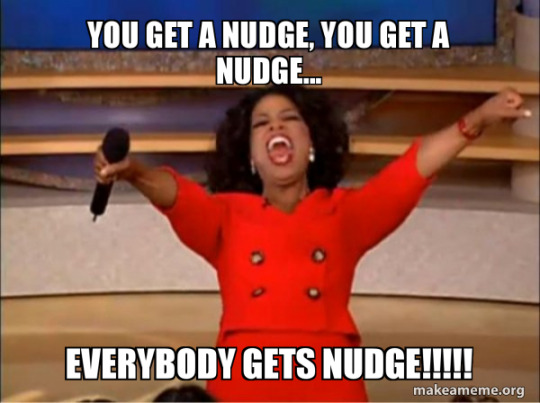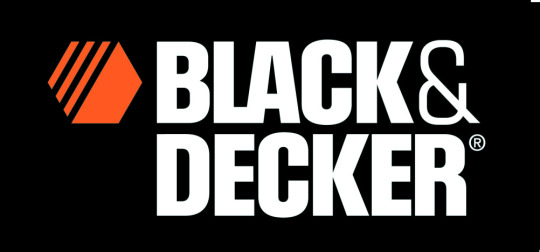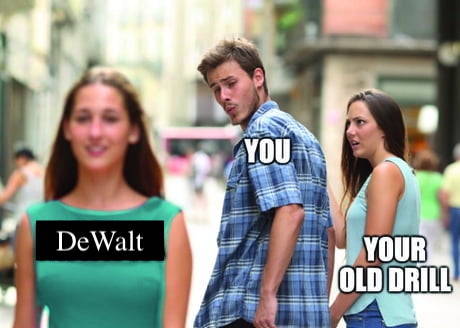Don't wanna be here? Send us removal request.
Text
Oh, you fancy, huh?
The role of the Burberry check is what drives consumers to Burberry in the first place, but its easily mimicable pattern is responsible for the rise of counterfeits, which damaged its luxury appeal to existing customers in 2003. I think Bravo’s decision to reduce the SKU with the checkered pattern and make the checkered pattern more incognito, only visible inside clothing and coats, is the right decision. First, reducing the products with the pattern reduces the ability for counterfeits to be produced, especially as those items tend to be accessories and scarves. Second, I believe hiding the checkered pattern makes it more desirable. Luxury items are more attractive when they don’t scream the designer all over it, and since Burberry is more of a “classic” luxury brand it’s products should not be gaudy.
Luxury items are status symbols, and the purpose of counterfeits is to exploit the products perception as a sign of wealth. I think the brand that is least likely to be hurt by the production of counterfeits is Hermes, specifically because of the Birkin bag. Hermes has made it almost impossible for counterfeits to exists, and those that exist are easily recognizable, not because of the quality of the bag itself but because of person who owns the bag. Unlike other designers, no one can walk into a Hermes store and buy a Birkin bag. You must be invited and your invitation as well as the bag offered to you is based on your relationship with the store and purchase history. Therefore, you usually have to have already spent a significant amount of money before this opportunity arises and you’re expected to pay $10,000+ for one of those bags. It’s foolish to try to mimic owning a real bag and highly looked down upon by customers.
The reason this has been so successful with Hermes as opposed to Burberry is because most customers have been priced out of owning a Birkin bag, so it's hard to replicate the ability to own one. However, what’s impressive about Burberry is how identifiable the brand is to non-customers, and even non-target customers. This is not the same for Hermes. I bet most people would not be able to name Hermes if a Birkin was placed in front of them, but would be able to identify Burberry with the checkered pattern.
My group is focusing on The Boston Herald for our branding lab project. The Boston Herald is facing a problem that most local newspapers are facing, which is a decline in circulation from the inability to digitalize and lack of awareness amongst younger generations. Newspapers face similar challenges around reputation and credibility, especially with more politically motivated articles. A challenge will be finding a way for younger consumers to trust that the Boston Herald is providing truthful news. One way to solve this is to leverage the trust that customers have in friends and family to provide them reliable information by implement a “share” feature that is easy to use. This will create the ability to receive reference articles from those you trust, which will boost their own trust in the paper overall.

0 notes
Text
Friction Friction, read all about it!
Friction can often be a roadblock in the customer experience that discourages customers from reaching the end of the process. From my experience, friction causes me to pause and think “I don’t feel like doing this right now, maybe I’ll come back to it,” but I never do. Bad friction can either harm or benefit businesses by discouraging customers in the purchasing process, such has needing to manually enter billing info vs automatic address look ups, or deterring them from ending the relationship, such as increasing the number of steps to cancel a subscription. Friction can also increase access to information and give more autonomy to the customer. This is good friction it reduces the pain points previously mentioned.
During my time working in the insurance industry, creating a frictionless customer journey for buying individual life insurance was a top priority for my company. Given the large amount of personal information, including health data, that a customer needs to hand over and the lack of digitalization of the process (i.e. applications were still being completed on paper), the pace at which the process is transforming is not encouraging to new generations. However, they are beginning to solve one big pain point: needing an in-person medical examination. When I left, my company was exploring the potential to integrate health data, from Fitbit and AppleWatch, into the underwriting process as a creative way to eliminate the medical visit step of the buying process for customers. Although this would be a huge innovation, if successful, I expect concerns around data access and storage becoming top of mind for buyers.
My group is focusing on The Boston Herald for our branding lab project. The Boston Herald is facing a problem that most local newspapers are facing, which is a decline in circulation from the inability to digitalize and lack of awareness amongst younger generations. One pain points I can think of when using digital versions of newspapers is how scrolling to find an interesting article can quickly make me disinterested altogether. One way to reduce the friction in scrolling for content is to create an AI-based customization by user, either by using the history of the users activity or through a sign-up survey based on interests (although depending on how the survey appears, it may cause good or bad friction). Another pain point is newspapers requiring a subscription to read their articles. Creating more transparency or reducing the friction of a paywall is another way to increase usage from younger generations.

0 notes
Text
You had me at Merlot
The Concha Y Toro case is a good example of the challenges a brand faces when the product they are selling is being judged on a categorial basis across the industry rather than the products itself. I don’t know anyone who says, “I prefer beer Mexican beers to Irish beers,” but when it comes to wines there is strong quality and reputational association with these factors. Of any type of alcohol, wine purchases are driven by country of origin and type of grape rather than brand. Most consumers have a preference for red vs white, and depending on the meal or occasion, prefer Italian wines vs Californian wines. The decision after that depends on price, bottle placement in the store, or recommendations from others. Personally, I make my wine decisions based off of the label artwork more than anything else. This begs the question of how consumers determine wine quality and the importance of cognitive associations outside of brands.
The halo effect with wine has major consequences for brands who produce wine in countries where consumers have little knowledge or negative impressions of the region. This makes it challenging for brands to distinguish themselves in the eyes of consumers, especially when the country of origin is dragging those brands down. The true challenge for Concha Y Toro will be changing the perception of the region of Chile as a whole and not just their own brand. However, in lieu of the resources and time, Concho Y Toro should pursue a bottoms-up strategy and focus on building out its premium segments. Similar to the Black and Decker case, if wine consumption is tied to perception then it is unlikely a consumer will believe that a brand known for being cheap and mass-marketed can actually produce a high-quality wine.
Concha Y Toro should not underestimate the power of price as a signal of quality. Given that the majority of wine consumption is based off perception rather than actual quality, moving into the premium markets might just be the move that makes this Chilean wine more attractive to consumers. Yes, this strategy did not work for Piat, but that’s because French wines were already seen as premium quality so its existence on the lower-end of the market created suspicion amongst consumers. Given that there is lower awareness of Chilean wine, this strategy can be successful.
My branding project is focused on rebranding the Boston Herald. Similar to this case, the Boston Herald is facing a problem that most local newspapers are facing, which is a decline in circulation from the inability to digitalize and lack of awareness amongst Millennials and Gen Z. The Boston Herald also faces consequences from the halo effect positively effecting other papers, such as The New York Times and The Washington Post. One potential avenue to explore is for the newspaper to customize content circulation by user. This can be as simple as the user completing a quick survey in the app during sign-up and being notified of specific articles when they are released as well as recommendations for other articles the user may like, similar to Netflix. This reduces the time spent on the app searching for relevant content to read and personalizes the experience.

0 notes
Text
Wink Wink, Nudge Nudge
I first learned about nudging in my Consumer Behavior class last year and its was brought up again when I took Crisis Management & Human Behavior class in H3 as a means to influence decision-making as a leader. What makes nudging so effective is its ability to make consumers act immediately or make faster purchasing decisions. The idea of nudging has always been fascinating to me as it’s such a subtle technique that can completely change consumer decisions without them ever being aware, and I believe this is the most powerful form of nudging. As a consumer, I am now acutely aware (or I think I am) of times I’m being manipulated by companies or brands to behave in a specific way they want me to. The top examples that come to mind are notifications from retailers that I “left items” in my shopping cart or when my AppleWatch reminds me to stand.
The most influential nudges are the ones you barely notice because they are so subtle and are designed to make you not notice anything is out of the ordinary, but your behavior still changes. One example that came to mind while reading is the small change Amtrak recently made to the booking process. I spend a lot of time on Amtrak between Boston and New York and therefore I’m very familiar with the flow that an individual goes through while navigating the app to buy a ticket. Amtrak normally orders its train schedule by time of the train, starting with the earliest train and ending with the latest. Recently, I’ve noticed that Amtrak now lists the Acela (most expensive and fastest) trains first followed by the regional trains. I was scrolling to find a ticket and almost bought one for over $200 because it seemed like there were only two options at the time I needed to leave. It took me a few minutes to think, “Where are all the regional trains?” and only then did I scroll to the bottom, where those trains were hiding. As a consumer, I am programmed to see schedules in order of time and by reordering the train options, Amtrak was nudging me to book the more expensive train without me even realizing anything was out of the ordinary. This nudge was so inconspicuous, and I only noticed it because I am a frequent Amtrak traveler who is more cost conscious and usually chooses the regional option, but less frequent customers or new customers can easily fall into that trap.
However, I don’t think nudging always works. Depending on the type of customer (i.e. frequent or new), it can have different effects, like how it did with me. In these instances, companies should explore customized nudging by customer type, demographic, purchase history, etc. to improve results.

0 notes
Text
Post #1: Black & Decker

Today’s topic
Black & Decker’s strength as a top brand for household tools and appliances does not directly translate into the power tools category, specifically for Tradesmen, despite top positions in the Industrial and Consumer segments. This post explores B&D’s failure to compete with Makita in the Tradesmen segment and how it can re-brand its products to change the perception for professional buyers.
Why does B&D struggle to compete in the Tradesmen segment?
The main challenges B&D faces in the Tradesmen segment is reputation and perception of product quality:
Ironically, the reputation of B&D power tools for this segment is negatively affected by the success of in the Consumer segment. The reputation is low due to tradesmen attributing the products to novice users instead of experts. This is because B&D tools are associated with novice DIYers (like my dad who bought a power tool to build IKEA furniture for my apartment in Cambridge). Even though their needs are the same (i.e., quality, reliability, price conscious), professionals want to be associated with tools produced for their specific expertise and craft. Tradesmen likely attribute their own personal reputation and skill with the tools they use, and do not want to be perceived as using the same tools as common consumers (just like buying a designer bag is a status symbol). This is similar to how professional golfers prefer the Callaway brand, which is known to produce the best equipment and golf wear, as opposed to mainstream brands like Nike or Adidas.
This association is strengthened by the fact that the color scheme and branding for these segments were indistinguishable. B&D uses the same charcoal grey color for its professional grade tools (and a similar black for its consumer tools) as other brands do for their consumer segments. This biases professionals away purchasing other B&D tools because of the perception they are buying amateur products.
Similarly, B&D dominance in the consumer market for power tools, and with home products and appliances more broadly, may lead professionals to believe that all B&D products are produced for common use. This creates the perception that B&D products are low quality and cannot hold up to their industrials needs and standards. It doesn’t help that B&D underperforms in two key categories (Milter Saws and Belt Sanders) that make up 80% of this segment’s sales, compared to Makita, which ranks as a high performer among all.
Why this doesn’t affect the Industrial segment…
In the power tools market, B&D performs better in the Industrial segment compared to the Tradesmen segment. Why is this the case if the tools are the same? The answer comes down to who purchases the products. The Industrial segment is comprised of large, commercial contractors who buy power tools for their employees. These companies are likely to rely on price to make purchasing decisions and rely on trusted relationships with suppliers. Given B&D is priced 5-10% lower than competitors, performs well, and has favorable relationships with the key purchase decisions influencers in this segment, it is favorable against competitors. However, B&D’s brand reputation in Industrial does not translate to the Tradesmen segment. This is most likely because the two segments are not in the same network and do not speak to each other (aka no word of mouth marketing). Tradesmen are comprised of electricians, plumbers, carpenters, roofers, etc, who buy tools for themselves. Although the end-user is the same in these two segments, those who make the purchasing decisions are different.
What can B&D do?
Drop B&D name: I think B&D should use the DeWalt name for the Tradesmen segment. The association with the Consumer segment will likely not be defeated due to industry perception and social stigmas among professionals. Starting fresh with a new name will allow B&D to break away from the image it has with the Tradesmen segment, and DeWalt is already known in the market as quality and has no ties to the common consumer. Many companies have been successful at using different brands to market products that are conflicting to the parent company or to other products in the portfolio. Examples include, Toyota and Lexus, General Mills and Larabar, and Coca Cola and Honest Tea. In these examples, the parent companies created brands that service the needs of different consumers while giving the perception that the product stands on its own.
Change the color: B&D should change the color of the tools from charcoal grey to yellow. This will differentiate the tools away from the consumer segment and make it more appealing to professional users as the color is already associated with construction and safety.

2 notes
·
View notes